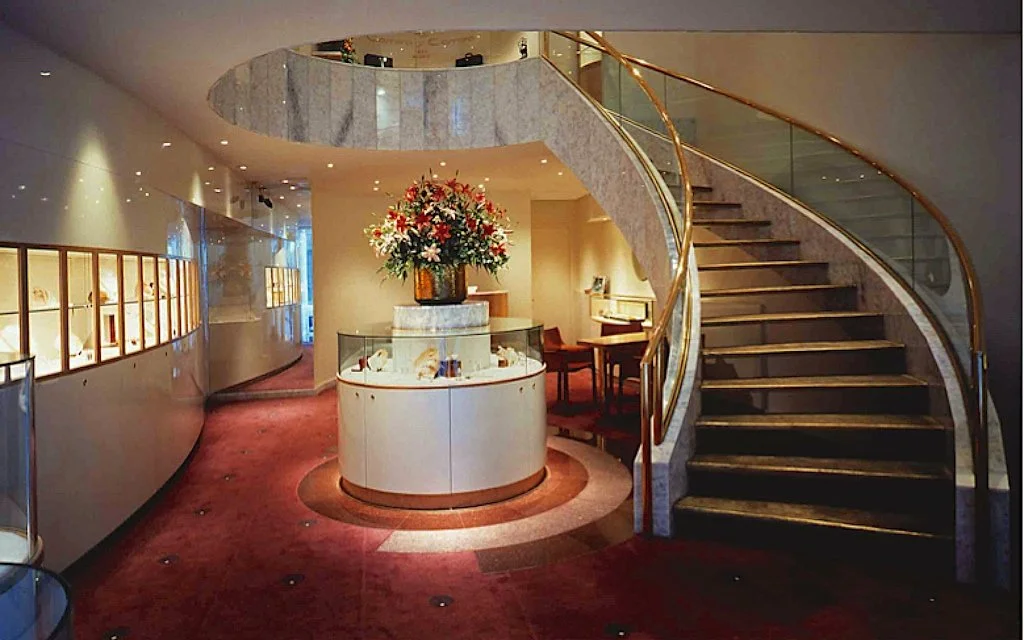Luxury Retail is thriving in Australia -
as could be seen by the lines of people on the footpath, queued up almost daily to get into Gucci etc. in capital cities. The recent investment that Tiffany committed to in their new Sydney flagship store, also implies confidence in the local market .
High end luxury vehicle Marques are also experiencing a great result - Rolls Royce predicts that by 2023, their sales will increase by between 10-20 percent in Australia - and Lamborghini, Porsche and Ferrari also have a similar story.
Upmarket furniture retailers are generally also going from strength to strength, not only with imported European furniture, but also with high end Australian designed furniture.
So, does the 2020 Covid-19 disruption to Luxury Retailing require us to completely rethink the strategies?
In part yes, as “online” will become a much more important aspect of all retailing, including Luxury. Retailers will therefore, need to become more interactive with the potential clients, as the online catalogue will not be enough, and the “theatre of Luxury Retailing” will need to be more of a blend between the boutique/showroom environment and the digital experience.
However, luxury will always be a desirable commodity and will probably return to normality quicker than the general market, because of the higher wealth of the segment.
Luxury is perceived differently by everyone, however there is common ground that most will agree upon which is, the recognition of brands that define luxury. These brands through their heritage, backstory and marketing strategies, Instantly create an image of exclusivity and desirability, that many people aspire to be associated with.
Each individuals background and interests, will place the perception of Luxury at a different point, as will their expectations be different when they are looking to obtain a Luxury item.
Most Luxury Retailing has gone beyond the obvious “Glitz & Champagne” environments with stiff servant- like sales assistants, being subservient to the clients every comment and whim.
Today, the sales assistant needs to be more akin to a brand ambassador, with intimate knowledge of the product which is conveyed to the client, in a simple yet stylish way.
Most people research future major purchases online to understand the product better - to determine if it suits them and their lifestyle. Understanding this, the boutique should incorporate some point-of-sale reference - possibly interactive - that replicates the online experience, in the boutique. This would be better done in video rather than still images, although still images should not be completely abandoned.
Today’s Luxury Retail environment is very different, to that of only a few years ago. Today, luxury is mainly presented in a lighter, less intimidating manner which is as much focused on lifestyle, as on exclusivity.
The company should strongly promote a “back story”, demonstrating in an educational manner the precision, manufactured or natural, of the products that it sells, as well as the attention to detail the brands represents, with an overall ambience that also strongly reflects the mood and the lifestyle, that best depicts the brands sold. Everyone loves a good short story.
Lighting should be subtle and pooled. Generally, an overall light wash should be kept to a minimum and the emphasis on personal light used when possible, to create an intimate feeling. Overhead lighting should be indirect, unless highlighting the product.
For Jewellery Boutiques, all display lighting should. e designed to make the jewellery sparkle, and products such as DiaLumen lighting systems could be considered to achieve this.
Any formal desk or barrier between the client and the sales ambassador, should be minimised and seating should always place the client’s eye level, slightly higher than the sales assistant/ambassador. This is less intimidating for the client and therefore, assists to help them feel at ease.
Informal seating should be arranged in a such a way that places the client and sales assistant/ ambassador, on an equal basis - and should a table be required to demonstrate the product, the table shouldn’t be a square barrier, but preferably round or oval.
It’s not unusual that major luxury purchases are not always made immediately. Clients may want to consider the purchase further. There a number of possible reasons for this however, this should also be seen as a positive development by the retailer, as it gives them a chance to market to the client via email or sms or even a beautiful piece of printed material, that also contains a personal hand written note.
In summary, the boutique or showroom and sales assistant/ambassadors should represent the quality and heritage of the brands, understanding that this is a destination that the client has chosen to be in.
Our advice to the Paspaley family when we were commissioned to design their first retail boutique in Sydney back in 1990, was that it should be a small gallery where clients could appreciate the inherent beauty of South Sea pearls and there was no pressure to buy.
That boutique was so successful that it remained open for 16 years, with virtually no alterations. It was only closed after we designed and opened their flagship boutique in 2006, in their newly acquired building at 2 Martin Place Sydney. After 16 years, the flagship boutique is still trading , without any major changes to our original design.
Paspaley King Street 1990 - 2006
Paspaley Flagship Boutique 2006 - to present
To continue this conversation with us, to discover how we would enrich your Luxury project,
please contact us on + 61 438 709970 or email us: inspire@designfocus.com.au
DESIGNFOCUS
Always exceeding our clients expectations - CHALLENGE US to exceed yours!







